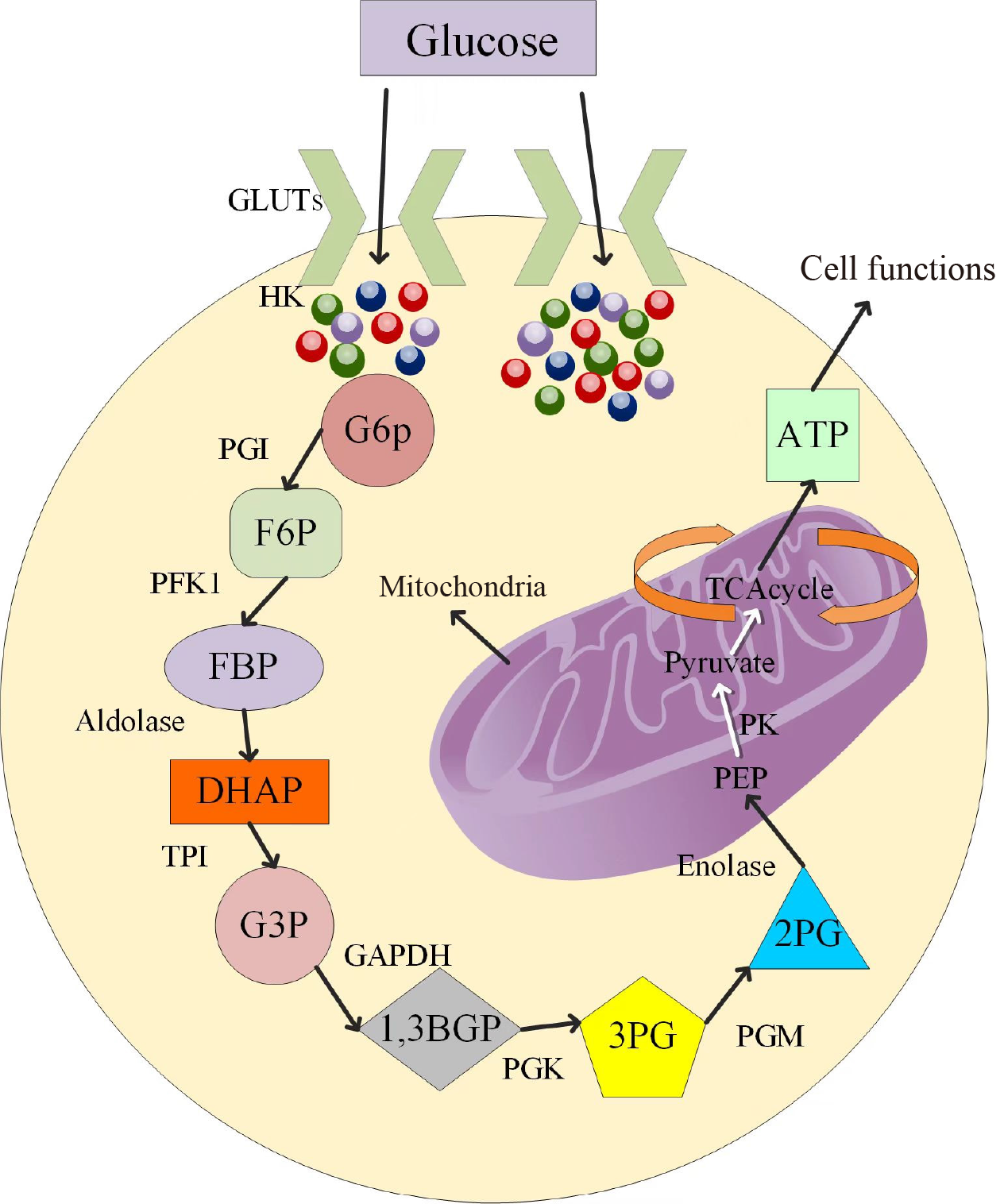Copyright
©The Author(s) 2025.
World J Hepatol. Mar 27, 2025; 17(3): 104715
Published online Mar 27, 2025. doi: 10.4254/wjh.v17.i3.104715
Published online Mar 27, 2025. doi: 10.4254/wjh.v17.i3.104715
Figure 1 The process of glucose metabolism.
Glucose enters the cell through glucose transporter proteins (GLUTs). Glucose from the external environment is transported into the cell via the GLUT transporter. In the cytoplasm, glucose is converted to glucose-6-phosphate (G6P) by hexokinase. G6P is then converted to fructose-6-phosphate (F6P) by phosphor glucose isomerase. Phosphofructokinase-1 converts F6P to fructose-1,6-bisphosphate (FBP). FBP is split by aldolase into dihydroxyacetone phosphate (DHAP) and glyceraldehyde-3-phosphate (G3P). Triose phosphate isomerase converts DHAP to G3P. G3P is oxidized by glyceraldehyde-3-phosphate dehydrogenase to 1,3-bisphosphoglycerate (1,3-BPG), producing nicotinamide adenine dinucleotide in the process. 1,3-BPG is converted to 3-phosphoglycerate (3-PG) by phosphoglycerate kinase. 3-PG is isomerized to 2-phosphoglycerate (2-PG) by phosphoglycerate mutase. 2-PG is converted to phosphoenolpyruvate (PEP) by enolase. The final step is catalyzed by pyruvate kinase, which converts PEP to pyruvate. Pyruvate then enters the mitochondria for oxidative phosphorylation and proceeds through the tricarboxylic acid cycle to produce adenosine triphosphate. GLUT: Glucose transporter proteins; HK: Hexokinase; PGI: Phosphor glucose isomerase; G6p: Glucose-6-phosphate; F6P: Fructose-6-phosphate; PFK1: Phosphofructokinase-1; FBP: Fructose-1,6-bisphosphate; DHAP: Dihydroxyacetone phosphate; TPI: Triose phosphate isomerase; G3P: Glyceraldehyde-3-phosphate; GAPDH: Glyceraldehyde-3-phosphate dehydrogenase; 1,3-BGP: 1,3-bisphosphoglycerate; 3PG: 3-phosphoglycerate; PGK: Phosphoglycerate kinase; PGM: Phosphoglycerate mutase; 2PG: 2-phosphoglycerate; PK: Pyruvate kinase; PEP: Phosphoenolpyruvate; TCA: Tricarboxylic acid cycle; ATP: Adenosine triphosphate.
- Citation: Ruan Z, Wang Y, Shi L, Yang XJ. Progress of research on glucose transporter proteins in hepatocellular carcinoma. World J Hepatol 2025; 17(3): 104715
- URL: https://www.wjgnet.com/1948-5182/full/v17/i3/104715.htm
- DOI: https://dx.doi.org/10.4254/wjh.v17.i3.104715









